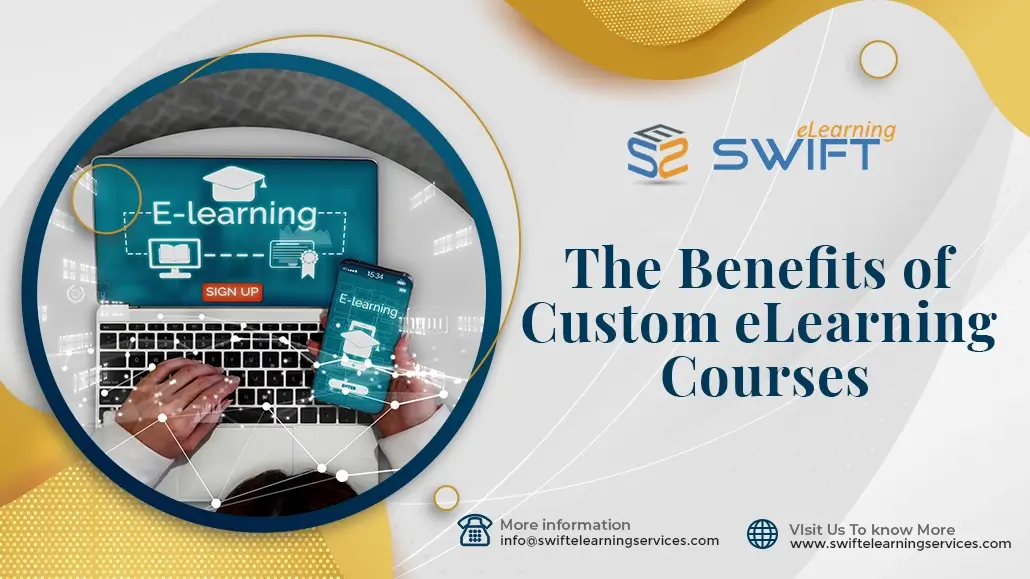Seeking custom eLearning solutions for your organization?
Elearning is really impactful when it sticks! It lets the learners apply the knowledge in the real-world environment.
A successful Custom eLearning development has all the trappings to make the learning memorable, meaningful and motivational.
Elearning developers need to pay enough attention to create relevant eLearning designs keeping learners in mind.
Each e-learning project is unique, however, there are some common components that make them successful.
Here are the top 4 best practices to create consistent and successful custom eLearning courses.
1. Conducting proper training needs analysis
Before developing ‘learner-centered’ eLearning, we need to understand who the learners are and what they need.
Due to budget and time constraints, it’s always easy to jump straight away into eLearning development and skip the process of “training needs analysis”.
However, crafting a successful elearning project begins with a proper training needs analysis. Because it helps you focus on the learners’ needs while addressing the factors of engagement and motivation.
This, in turn, helps you accomplish the client’s business goals and avoids mismatched expectations.
Also remember that, as an eLearning designer, before you offer any custom e-learning services, try to understand whether the training is really required.
Holding an eLearning project kickoff meeting with project stakeholders and subject matter experts (SMEs) is a better way to start off with.
Asking the right questions will help you:
1. Identify and define the specific business goals,
2. Figure out the nature and scope of your eLearning project
3. Understand the learner profile/demographics, learner styles and preferences
4. Determine the actual knowledge or performance gaps (current level of performance levels/skills they already have v/s desired performance, levels/skills)
5. Align the learning objectives to business goals
6. Define eLearning project deliverables and specifications
7. Fully tailor the eLearning content to desired learning outcomes
8. Finally, achieve the desired learning outcomes
Therefore, a proper training needs analysis provides more clarity and avoids teaching wrong competencies.
Remember, there is no place for assumptions when it comes to developing an effective custom elearning.
2. Adopt appropriate eLearning Strategy
No matter how good you conduct an elearning needs analysis, it makes no sense if your online training is not designed to capture learner’s attention.
Combining the best principles of instructional design as well as graphic design helps the learners retain information for a longer time and apply the new skills on the job.
Therefore, choosing the apt eLearning strategy blended with appropriate learning design approaches is a crucial aspect in custom elearning course development.
The eLearning strategy/approach may include the blend of interactive multimedia, branching scenarios, storytelling, elearning case studies, branching simulations, and gamification to keep the learner motivated and engaged.
3. Make the eLearning Content Relevant
Did you know that the average attention span of a learner is less than a minute? Now imagine the dreaded learners who go through the content dumps.
Adult learners show interest in completing the course only when the eLearning content is relevant to their day-to-day activities at work.
So don’t overload them with unnecessary information. Respect their prior knowledge. Don’t teach them what they already know.
Instructional designers should work closely with subject matter experts (SMEs) to represent relevant and contextual eLearning content.
4. Choosing the Right eLearning Vendor/eLearning Company
Engaging the right eLearning developer for your custom e-learning courseware development is a crucial aspect. Here are a few points to consider while selecting the best eLearning vendor.
1. Look for a full-fledged eLearning partner who provides end-to-end eLearning solutions with high-quality learning experiences. You may also need eLearning Localization for your globally disperse learners.
2. Hire the eLearning content development vendor who has the right pool of talent and/or expertise to address your custom e-learning needs. The talent could be the Instructional Designers, Content Writers, Graphic Designers, Quality Analyst, Project Managers, and Program Developers.
For more information on selecting the right eLearning vendor you can go through our blog – “Outsourcing eLearning: 5 Questions You Should Ask While Selecting an Elearning Vendor“.
If you are still opting for the tiring and boring traditional, off-the-shelf training, then it’s time to rethink and take advantage of custom eLearning services to make the most of it.
If you are looking to make the most of custom eLearning to train your workforce then we can be your learning partner to help you create cost-effective and engaging eLearning. Click here to contact us.
Let’s make the e-Learning stick, not stuck!
Please leave a comment below and share your thoughts and insights with us.



